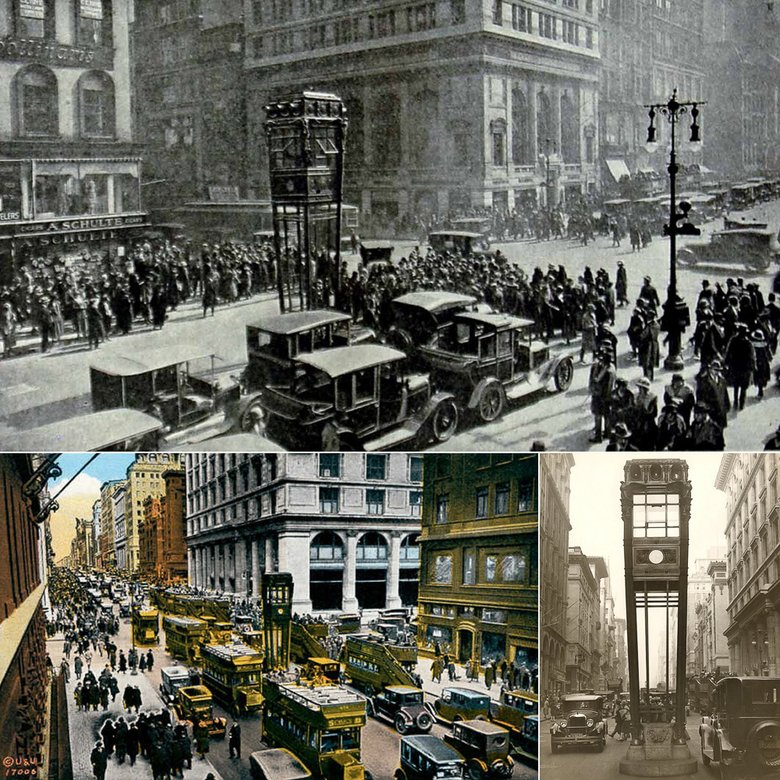- Homepage
- Uncategorized
- The First Traffic Signal in NYC: A Milestone in Urban Transportation (Fifth Avenue and 34th Street, 1922)
The First Traffic Signal in NYC: A Milestone in Urban Transportation (Fifth Avenue and 34th Street, 1922)
In 1922, New York City made a significant step towards modernizing its urban infrastructure with the installation of the first-ever traffic signal at the busy intersection of Fifth Avenue and 34th Street. This event marked a pivotal moment in the city’s transportation history, signaling a transition into a more organized and regulated era of road traffic.

Before the advent of traffic signals, streets in major cities like New York were chaotic, with little to no regulation for pedestrians and vehicles. Horse-drawn carriages, automobiles, streetcars, and pedestrians all shared the same roads, often leading to confusion, accidents, and gridlock. As the number of automobiles on the roads increased, it became clear that there was an urgent need for a system that could manage traffic flow efficiently and reduce the risk of accidents.

The installation of the traffic signal at Fifth Avenue and 34th Street was not just a response to the growing number of cars, but also part of a broader effort to improve the efficiency and safety of urban transportation systems. This signal used red and green lights, a simple yet innovative solution that would lay the groundwork for the thousands of traffic signals that would later spread across the city, and eventually the world.
The idea of using traffic lights had been discussed for several years, but it wasn’t until 1922 that it became a reality in New York City. The traffic signal was installed as part of an experiment conducted by the city’s Department of Public Works to reduce accidents and improve the flow of traffic. At the time, the intersection of Fifth Avenue and 34th Street was a major hub, heavily trafficked by both pedestrians and vehicles, making it an ideal location for the first traffic signal.

The early traffic lights were a far cry from the sophisticated, automated systems we use today. They were manually operated, often requiring a traffic officer to control them, and they were a basic two-color system—red for stop and green for go. However, despite their simplicity, these early signals revolutionized the way New Yorkers interacted with their streets. The introduction of the traffic signal not only made travel safer but also laid the foundation for the more complex traffic control systems that would follow.

The success of the signal at Fifth Avenue and 34th Street soon led to more installations throughout the city. By the 1930s, traffic lights were common at major intersections in New York, and their use spread to other cities across the United States and the world. Today, traffic signals are a ubiquitous feature of urban landscapes, helping to maintain order and reduce the chaos of traffic in cities worldwide.
Looking back, the installation of the first traffic signal in New York City was a momentous occasion that changed the way people moved through the city. It was not just a technological advancement but a symbol of progress and adaptation to the ever-growing challenges of urban life.